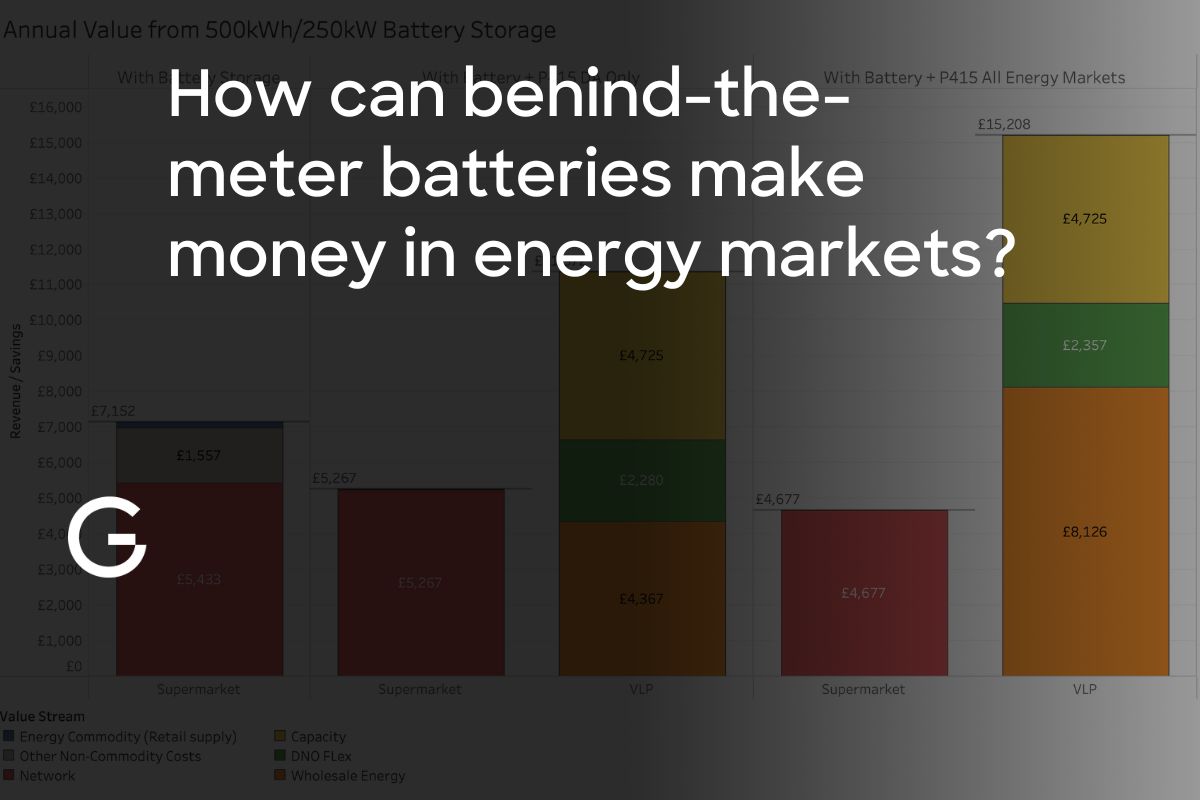What makes a good battery energy storage system?

We’ve talked about the use-cases for battery energy storage systems, but what are the qualities that make one battery energy storage system (BESS) better or worse for a given use-case?
We’ve made another list!
If you are making an investment case for battery energy storage, how would you evaluate the different technical qualities different technologies might offer and how that could impact the business case for your project. Gridcognition can help.
1. Energy density
Battery storage systems can store a lot of energy in a relatively small amount of space. Energy density is a measure of energy per unit of volume. It is sometimes called “volumetric energy density”. There are many different battery chemistries with different energy densities, and even just within the family of Lithium-ion batteries, volumetric density can vary considerable. But as an indication the energy density of a given Lithium-ion battery pack could be around 500 watt-hours per litre (Wh/L). For comparison, the energy density of Diesel might be around 10,000Wh/L (or 10kWh/L).
2. Specific energy
We can also think about density of battery storage systems by measuring the energy per unit of weight, sometimes called “gravimetric energy density”. As an indication the energy density of a given Lithium-ion battery might be 250 watt-hours per kilogram (Wh/kg), and Diesel for comparison might be around 12,000Wh/L (or 12kWh/L).
3. Energy cost
Battery storage systems have a cost per unit of energy stored, or $/kWh.
When we are comparing measures of cost, or any of these qualities, we need to be clear about the scope we are considering. Are we looking at just the cost of the battery pack that is one component of an integrated storage system, with the long targeted price of $100/kWh, or are we looking at the designed, installed and commissioned cost of an entire storage system, which could be many multiples more than this.
4. Power cost
Battery storage systems also have a cost per unit of power output, or $/kW.
When we are considering the cost-efficiency of a battery energy storage system for a given use-case, it’s important to understand if the use-case is energy-limited (e.g. energy arbitrage or load-shifting) or power-limited (e.g. frequency or voltage regulation).
5. Power output
Power output is a measure of how fast the battery can discharge or charge, usually expressed in kilowatts (kW).
Sometimes we will see power output expressed as a ratio to the storage capacity, or as a storage duration. A charging ratio of 0.5 would represent a battery that could fully charge or discharge in a 2-hour period, or in other words it could maintain its full power output for 2-hours. A charging ratio of 1.0 would represent a battery that could fully charge or discharge in 1-hour.
This can be counter-intuitive because it means that a, say, 4-hour duration battery would be cheaper than 1-hour duration battery, given then same energy storage capacity (kWh), because this implies it will have a lower charging ratio or power output (kW).
6. Cycle life
Cycle life is number of times a battery can discharge and recharge before it falls below some threshold of useful capacity due to degradation.
The degradation of batteries can be very complex with different degradation characteristics for different chemistries, different environmental conditions, and different applications. In practice it is mostly a factor of time (batteries have a ‘shelf-life’, even when they are only lightly-used), energy throughput (the total volume of energy discharged and charged), and rate of throughput (how quickly the battery is discharged and charged).
When we are planning battery projects for a given application, we need to understand how our application will affect the rate of degradation, or health, of the battery, and how this might relate to the vendor’s warranty for the battery system.
Use-cases like ‘peak-lopping’ require much less throughput or ‘cycles’ than use-cases like energy arbitrage, where the battery might be chasing a dynamic wholesale energy price. So when developing an econo-technical model for a project, you need to consider the value a given use-case might deliver relative to the degredation it will cause in the battery.
7. Round-trip efficiency
There are losses in the process of charging and then discharging a battery storage system. We call the ratio of power absorbed to energy released through this cycle the ’round trip efficiency’. The energy that is used to charge a battery has a cost, and so the value created through the charge and discharge cycle has to be sufficient to compensate for the cost of energy losses (and for the asset replacement cost associated with the degredation of the battery through the cycle). Any econo-technical simulation and optimisation of a battery project must take into account the losses associated with round-trip efficiency.
8. Safety
Different battery technologies can have different safety characteristics that can make the better suited to different applications, but this will often entail trade-offs with the other battery qualities. Some Lithium-ion batteries can exhibit a phenomenon known as thermal runaway, which can lead to fires, as owners of Samsung Galaxy 7 phones became all too aware of. A battery with a lower energy density might have a better safety profile, and so suited, for example, for installation inside a home, but may be bulkier and more expensive as a result.
9. Temperature range
The performance of batteries, including their safety performance, can be very sensitive to temperature. For some applications, there may be quality tradeoffs required to be able to accomodate different environmental conditions.
10. Noise
Most battery systems have active cooling systems that can be noisy. If you are installing a battery in or near an office or school, noise can be a material issue to consider.
Bonus: Aesthetics! 💁🏼
While batteries are generally installed to do a specific functional job at a price, I’m sure the beautiful industrial design of the Tesla Powerwall has been a factor in why its chosen for some applications.






.png)

